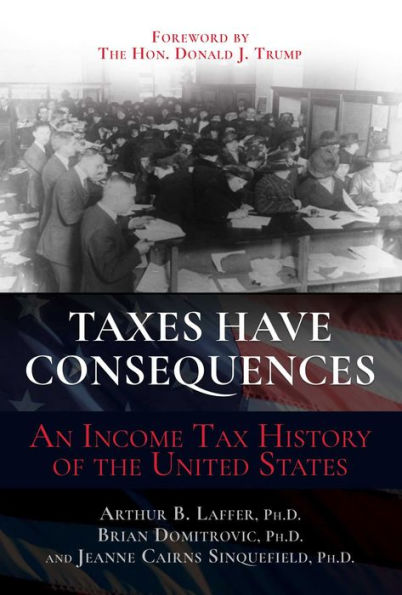Table of Contents
Acknowledgments and a Note on Sources xi
List of Abbreviations xii
List of Figures and Tables xv
Foreword xxiii
Chapter 1 Whatever 1
The Crucial Word 6
A Striking Relationship 13
Helter Shelter 17
Tax Rates High or Low: The Economic Saga 20
1913-1923 20
1924-1928 20
1929-1932 21
1933-1941 21
1942-1945 22
1946-1949 22
1950-1960 23
1961-1967 23
1968-1982 24
1983-1989 25
1990-1994 25
1995-2000 26
2001-2020 26
Paradoxes 27
The "U" 31
Chapter 2 Income Tax Avoidance: The Income of the Rich Is Not What It Seems 33
High Rates, Endless Avoidance 38
1 Municipal bond interest 38
2 The George M. Cohan rule 41
3 Personal holding companies 42
4 The incorporation of leisure pursuits 43
5 Foreign incorporations 44
6 The tax bar 45
7 Income splitting 46
8 The culture of tax avoidance 48
9 Executive compensation: capital gains 49
10 Executive compensation: the swindle sheet 50
11 Lunch in Manhattan 51
12 Bill Gates's John Brooks 53
13 Power architecture 56
14 Power art 58
15 Pre-Thatcher Britain 60
16 Gucci Gulch 61
17 The waning of corporate art 63
18 Lunch in the time of creative destruction 64
19 The special story of Warren Buffett 66
20 Tax avoidance in the twenty-first century 69
Taxes, Equality, and History 70
Chapter 3 Beyond Piketty: The Laffer Curve Is Alive and Well 73
Tax Rates, Incentives, Retention Rates, and Tax Revenues 77
Top Tax Rates, Average Top Tax Rates, and Average Top Income 80
Tax Revenues from the Top 1 Percent 86
Chapter 4 Tax Cuts of the Roaring 1920s 100
The Numbers 102
The National Conversation 106
Undoing "Crowding Out" 115
Chapter 5 The Smoot-Hawley Tariff, the Revenue Act of 1932, and Crush of the Great Depression 119
The Great Contraction, Part I: The Smoot-Hawley Tariff 122
The Great Contraction, Part II: The Big Retroactive 1932 Income Tax Hike 129
Interpreting the Mess 143
Chapter 6 Tax Rates and the Persistence of the Great Depression 153
FDR: First, a Wealth Tax 154
FDR II: Finally, Some Scaling Back 156
The Siren Call Gets Him: FDR Increases Tax Rates 162
The Persistence of the Great Depression: A Saga of Tax Increases at Every Level 171
State and Local Taxes Pile On 172
The FDR Legacy 175
Chapter 7 Unindicted Coconspirators: States and Localities during the Great Depression 181
Chicago 183
The Great State and Local Tax Shift 187
The 1930s: High Taxes across the Levels of Government 191
The State and Local Tax Explosion of 1929-1939: Specifics 196
State Corporate Income Taxes 202
State Personal Income Taxes 203
State Sales Taxes 204
Local (and State) Property Taxes 205
State and Local "Other" Taxes 207
Taxes and the Causes and Sustaining of the Great Depression 209
Chapter 8 World War II and the Economy 212
Keynesian and Supply-Side Premises 214
Debt Financing, Taxes, and Spending: The World War II Effects 220
The Wartime Workforce 225
The Postwar Economy 230
Chapter 9 Government Retreat and the Emergence of Post-World War II Prosperity 239
Prosperity and Policy: The First Tax Cut 241
No Jobs Program, Spending Falls, the Economy Runs 245
The States Force a Tax Cut 249
How Postwar Prosperity Dawned 257
Chapter 10 High Tax Rates and the Sluggish 1950s 260
The Tax Increases Come 263
A Culture of Tax Avoidance 268
The Deferred-Compensation Mania 268
The Capital Gains Bonanza 272
The Age of Expense Accounts and Perquisites 275
Millionaires Declaring Nothing-and Writing Personal Tax Laws 279
An Economy Seeking Direction 281
Chapter 11 The Growth Takeoff of the 1960s 287
Moving Again 289
Tax Cuts Come: 1962 293
Trade 297
Income Tax Cuts Come: 1963-1964 300
Achieving Postwar Prosperity 302
Taxes and the Ethos of Democracy 305
Chapter 12 The States after World War II 314
Personal Income Taxes 316
Further Forms of State Taxation 325
Corporate Income Taxes 325
Sales Taxes 326
Sin Taxes 327
The Property Tax Again in Agony 328
Chapter 13 Taxes and Stagflation 332
Bracket Creep 337
Forsaking JFK 340
Tax Reform Again 345
Investors Drop the Dollar 351
Taxflation 353
Turning Point 358
Chapter 14 The Great Boom, 1982-2000 362
The 1981 Tax Cut 364
"Finally A Tax Cut" 367
Nearly a Flat Tax 370
A Tax-Increase Interregnum 374
Tax Cuts and the Late 1990s Takeoff 376
Economic Transformations 378
Chapter 15 Sluggishness in the 2000s 382
The Bush Tax Cuts 384
The Great Recession 391
A Weak Expansion 395
Taxes and Secular Stagnation 399
Chapter 16 The Trump Tax Cut and Economic Resurgence into 2020 402
The Sore Thumb 403
Extending the Economic Expansion 405
The Tax Receipts Increase 410
Conclusion 413



